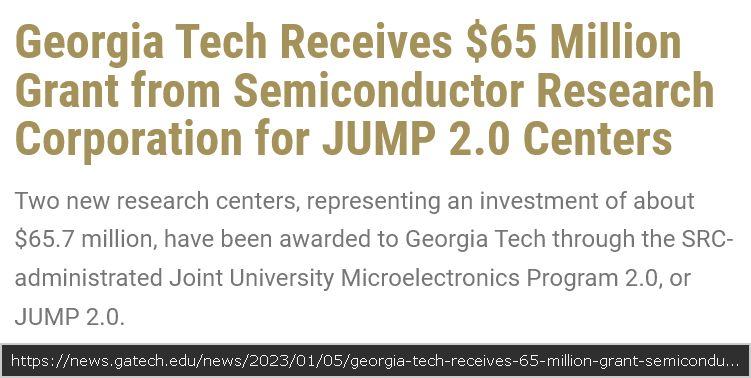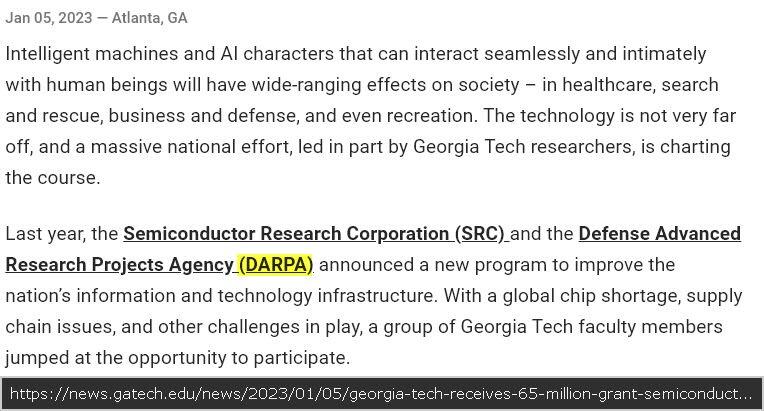Internet of Bio-NanoThings
Unfortunately, I’m without half-decent internet this weekend due to circumstances of poverty, but intend to add to this next week when it’s fixed. In the meantime, there’s enough here to make me want to delve further. I want to locate videos next week to find out more.
I found a conference presentation from December 2019 talking about the Internet of Bio-NanoThings (01)
I looked up the author of the presentation (Dr. Ian F. Akyildiz) to try and locate an actual “video” presentation or more about him. The links and papers seem to point to devices for the “internet of things” but the presentation seems to indicate the “internet of bodies” and I’ve never heard of the “internet of bio-nanothings” before, which certainly sounds more on the “human intervention side” of this dystopian future.
He is the founder of the ACM NANOCOM (International Conference on Nanoscale Computing and Communication), which he launched in May 2013 with the goal of accelerating nanoscale computing, communication, and networking research activities. (02) (03) (04)
Found that his current research interests are in Nanonetworks, Long-Term Evolution Advanced Networks, Cognitive Radio Networks, and Wireless Sensor Networks.
He was also a speaker at the ITU’s Kaleidoscope 2020 – Industry-driven digital transformation (sponsored by IEEE). (05) (06)
The description of this conference was:
“The Fourth Industrial Revolution has data analytics at its core, and relies on innovations in fields such as robotics, cyber-physical systems, digital twins, virtual simulation, augmented reality, edge computing, artificial intelligence, and blockchain—innovations all contributing to the digital transformation of industrial processes.”
“In particular, the manufacturing sector has been an early adopter of new technologies capitalizing on connectivity and intelligence, but these technologies introduce endless possibilities; the automotive, energy, retail, and healthcare industries are all moving in this direction.”
He received his PhD in Computer Engineering from the University of Erlangen-Nuremberg, Germany. Currently works at the School of Electrical and Computer Engineering, Georgia Institute of Technology and Director of the Broadband Wireless Networking Laboratory. Has also lived in Barcelona, Spain, and Pretoria, South Africa; has held visiting professorships in Chile, France, and Spain, and is the founder of the Nano Communications Center. (07)
Georgia Institute of Technology was tasked with manufacturing the prototype of a graphene nanoantenna in 2013. (08)
He authored the following books: (09)
- I. F. Akyildiz and X. Wang: Wireless Mesh Networks, John Wiley Publishing Company, ISBN 978-0-470-03256-5, February 2009.
- I. F. Akyildiz and M. C. Vuran: Wireless Sensor Networks, John Wiley Publishing Company, ISBN 978-0-470-03601-3, August 2010.
- Z. Sun and I. F. Akyildiz, “Key Communication Techniques for Underground Sensor Networks,” Foundations and Trends in Networking, Now Publishers Inc., ISBN 978-1-60198-550-7, April 2012.
- J. M. Jornet and I. F. Akyildiz, “Fundamentals of Electromagnetic Nanonetworks in the Terahertz Band,” Foundations and Trends in Networking, Now Publishers Inc., ISBN 978-1-601-98736-5, November 2013
- M. Pierobon and I. F. Akyildiz, “Fundamentals of Diffusion-Based Molecular Communication in Nanonetworks,” Foundations and Trends in Networking, Now Publishers Inc, ISBN 978-1-601-98816-4, April 2014.
Patents: (10)
- Akyildiz, I. F., and Kak, A., “Networks Employing CubeSats”, U.S. Patent Application No. 62/780,136 on December 14, 2018. (passed all claims; expected in July 2020).
- Alexey Kureev, Evgeny Khorov, Artem Krasilov, Ian F. Akyildiz, Ahan Kak, “A Device for Weighted Signal Multiplexing in 5G Wireless Systems”, 21.10.2019, RU 193265 U1.
- A. Pitsillides, C. Liaskos, A. Tsioliaridou, S. Ioannidis, I.F. Akyildiz, “Wireless Communciation Paradigm Realizing Programmable Wireless Environments through Software Controlled Metasurfaces”, US Patent No. 10,547,116 B2, January 28, 2020.
- Akyildiz, I. F., Schmidt, H. K., Lin, S.-C., and Al-Shehri, A.A., “Environment-aware cross-layer communication protocol in underground oil reservoirs”, U.S. Patent No. 10,117,042 on October 30, 2018.
- Luo, M., Lin, S.-C., and Akyildiz, I. F., “Multi-controller control traffic balancing in software defined networks”, U.S. Patent No. 10,091,093 on October 2, 2018.
- Schmidt, H. K., Akyildiz, I. F., Lin, S.-C., and Al-Shehri, A.A., “Magnetic induction based localization for wireless sensor networks in underground oil reservoirs”, U.S. Patent No. 10,048,400 on August 14, 2018.
- I. F. Akyildiz and J. M. Jornet, “Ultra Massive MIMO Communication in the Terahertz Band,” U.S. Patent No. 9,825,712 B2 on November 21, 2017.
- Akyildiz, I. F., and Jornet, J. M., “Graphene-based Plasmonic Nano-antenna for Terahertz Band Communication”, U.S. Patent No. 9,643,841 on May 9, 2017.
- Akyildiz, I. F., and Jornet, J. M., “Graphene-based Plasmonic Nano-Transceiver employing HEMT for Terahertz Band Communication”, U.S. Patent No. 9,397,758 on July 19, 2016.
- Akyildiz, I. F., Gutierrez-Estevez, D., and Chavarria-Reyes, E., “Femto-Relay Systems and Methods of Managing Same,” U.S. Patent No. 8,976, 690 B2 on March 10, 2015.
- I. F. Akyildiz, “Systems and Methods for Asynchronous Transfer Mode and Internet Protocol,” U.S. Patent No. 7,058,027 on June 2006.
External links
- Broadband Wireless Networking Laboratory
- Georgia Institute of Technology
- Nano Communications Center (link doesn’t work http://et4nbic.cs.tut.fi/nanocom/index.html )
- NaNoNetworking Center in Catalunya
- Author profile in the database zbMATH
See also
Hmm, really? Okay…
A graphene antenna is a proposed high-frequency antenna based on graphene, a one-atom-thick two-dimensional carbon crystal that would enhance radio communications. The unique structure of graphene would enable these enhancements. Ultimately, the choice of graphene for the basis of this nano antenna was due to the behavior of electrons. This is currently being researched, and graphene appears to be a feasible basis for this antenna.
Antenna
It would be unfeasible to simply reduce traditional metallic antennas to nano sizes, because they would require tremendously high frequencies to operate. Consequently, it would require a lot of power to operate them. Furthermore, electrons in these traditional metals are not very mobile at nano sizes and the necessary electromagnetic waves would not form. However, these limitations would not be an issue with graphene’s unique capabilities. A flake of graphene has the potential to hold a series of metal electrodes. Consequently, it would be possible to develop an antenna from this material.
Electron behavior
Graphene has a unique structure, wherein, electrons are able to move with minimal resistance. This enables electricity to move at a much faster speed than in metal, which is used for current antennas. Furthermore, as the electrons oscillate, they create an electromagnetic wave atop the graphene layer, referred to as the surface plasmon polariton wave. This would enable the antenna to operate at the lower end of the terahertz frequency, which would be more efficient than the current copper based antennas. Ultimately, researchers envision that graphene will be able to break through the limitations of current antennas.
Properties
It has been estimated that speeds of up to terabits per second can be achieved using such a device. Traditional antennas would require very high frequencies to operate at nano scales, making it an unfeasible option. However, the unique slower movement of electrons in graphene would enable it to operate at lower frequencies making it a feasible option for a nano sized antenna.
See also
His name, is the only person’s “name” listed as a related tag on that Wiki, even though none of the “references” on that Wiki connect to him.
External links
Graphene is a sheet of carbon just one atom thick, in a honeycomb structure, and it has many desirable electronic properties. Electrons move through graphene with virtually no resistance—50 to 500 times faster than they do in silicon.
As well as facilitating high-speed communication between devices, graphene antennas could enable faster wireless connections between nanoscale components on chips. “Antennas made of graphene can be made much smaller in all dimensions than a metal wire antenna. It can be made to be on the order of a micrometer or a few nanometers,” Avouris says. “The significance is that the antenna can be incorporated in a very small object.”
Of course, myriad challenges lie ahead. Antennas don’t work alone; they rely on many other components—such as signal generators and detectors, amplifiers, and filters—all of which would have to be fabricated at similar scales and with similar speeds in order to make a complete device.
In recent papers he was focusing on the following fields of study:
Ian F. Akyildiz mainly focuses on Wireless, Electronic engineering, Computer network, Distributed computing and Software. His Wireless research includes themes of Electromagnetic radiation, Wireless sensor network, Surface and Communication channel. His study ties his expertise on Radio propagation together with the subject of Wireless sensor network. (11)
His biological study spans a wide range of topics, including Polarization, Path loss, MIMO, Terahertz radiation and Extremely high frequency. His studies deal with areas such as Wireless ad hoc network and Resource as well as Computer network. The Distributed computing study combines topics in areas such as Forwarding plane, Software deployment, Variety, Optimization problem and Efficient energy use.
Between 2017 and 2021, his most popular works were:
- A New Wireless Communication Paradigm through Software-Controlled Metasurfaces (273 citations)
- Combating the Distance Problem in the Millimeter Wave and Terahertz Frequency Bands (119 citations)
- A Novel Communication Paradigm for High Capacity and Security via Programmable Indoor Wireless Environments in Next Generation Wireless Systems (70 citations)
The 2021 Kaleidoscope conference was for “Connecting physical and virtual worlds” (12) (13)
If they can’t get you to inject your new self-assembling slave-tracker / dog-tags, you’ll be wearing them. (14)
Georgia Institute of Technology
Georgia Tech just received a $65 Million Grant from Semiconductor Research Corporation for JUMP 2.0 Centers in January 2023.
Intelligent machines and AI characters that can interact seamlessly and intimately with human beings will have wide-ranging effects on society – in healthcare, search and rescue, business and defense, and even recreation.
Last year, the Semiconductor Research Corporation (SRC) and the Defense Advanced Research Projects Agency (DARPA) announced a new program to improve the nation’s information and technology infrastructure. With a global chip shortage, supply chain issues, and other challenges in play, a group of Georgia Tech faculty members jumped at the opportunity to participate.
JUMP 2.0 will support the work of dozens of inter-disciplinary researchers from multiple universities, tackling the technological issues of an increasingly connected world. The goal is to improve the nation’s performance, efficiency, and capabilities for both commercial and military applications.
The JUMP 2.0 announcement represents the latest round of significant support advancing AI-related research at Georgia Tech. Last July, Tech received two National Science Foundation Artificial Intelligence Research awards totaling $40 million. In September, the U.S. Economic Development Administration awarded Georgia Tech $65 million to support a statewide initiative combining AI and manufacturing innovations with workforce and outreach programs.
Launching in 2023, JUMP 2.0 is the next chapter of an SRC-led alliance that formed in 2018 – the original JUMP, with its broad focus on nano-electronic computing.
JUMP 2.0 is a collaboration between SRC industrial participants (IBM, Intel, Raytheon, TSMC and Samsung, to name a few) and the Department of Defense. The program asked researchers from U.S. universities to solicit proposals for collaborative, multidisciplinary, multi-institute research in seven theme areas: cognition; communications and connectivity; intelligent sensing to action; systems and architectures for distributed computing; intelligent memory and storage; advanced monolithic and heterogenous integration; and high-performance energy efficient devices.
The two new research centers Georgia Tech, both headquartered within the School of Electrical and Computer Engineering (ECE) are:
• CoCoSys: Center for the Co-Design of Cognitive Systems (theme area: cognition)
• CogniSense: Center on Cognitive Multispectral Sensors (theme area: intelligent sensing to action),
Semiconductors, or microchips, are basically tiny silicon slices packed with millions of transistors that control electron activity. These chips enable all our electronic devices to work. So, a shortage of semiconductors – or a shortcoming in terms of quality and efficiency – spells trouble for sectors and industries that depend on these little bits of hardware, for example: computing, healthcare, telecommunication, security, transportation, or manufacturing.
Building a Digital Human
The goals for the JUMP 2.0 centers are lofty and wide-ranging, addressing current and future needs.
“In some sense, the question we’re addressing is, ‘how do you build a perfect digital human,’” Raychowdhury said of the Team CoCoSys mission. “We want to learn how to build systems which are aware – capable of interacting as human agents with us. For example, we want AI that can listen to a conversation between two human beings and learn from that and seamlessly merge into society.”
Current AI, Raychowdhury said, may be able to perform relatively narrow tasks better than a human, but one area that it is much less effective is human-intelligent machine collaboration. This concept has been increasingly researched in recent years as automated virtual assistants and the metaverse have entered the mainstream. As cognitive systems research moves toward creation of a digital human, it will have far-reaching impact in industry and healthcare testing, disaster relief, fully autonomous and collaborative systems, immersive training and gaming experiences, and more.
“Continuous learning through interactions with humans is missing,” Raychowdhury said. “The next generation of AI needs to comprehend nuances of human interaction, explain, and interpret visual cues and language, and be able to do that in real-time with high energy-efficiency. That’s what we want to address. That’s the meta goal of this center.”
Sensors with a Brain
The ability to sense is fundamental and probably the most critical component for building an intelligent machine. “It is fundamental to nature,” said Mukhopadhyay. “We have eyes, ears, a nose, and skin to sense the environment around us.”
The CogniSense Center research team wants to develop sensors that can effectively “perceive” everything around them and, like humans, efficiently attend to the information that really matters.
Today’s electronics sensors samples everything they “see” and generate abundance of digital data; sometime way too much for a machine store, process, and make sense. The CogniSense center’s goal is to change this paradigm by learning from biology.
“In human, sensors and the brain work together to control attention and extract only important information from everything happening around us,” said Mukhopadhyay. “Can we make electronic sensors that behave like that – cognizant and energy efficient?”
“We have a diverse team with expertise in radars, optics, integrated circuits, packaging, signal processing, and artificial intelligence to build these new sensors with a brain,” said Mukhopadhyay.
I’m sure some of the staff at my past employ will be frothing at the mouth at all these “enhancements”, and yet I’m just horrified because I’ve spent too much time seeing how they want to be able to remote control everything… and everyone… from a central location.
If we had less psycho’s in charge, maybe. The problem is, it’s a weapon.
Browse Categories:
Graphene | Hackable-Humans
Tags: DARPA | DoD | IBM | Internet of Things | Internet of Bodies

Site Notifications/Chat:
- Telegram Post Updates @JourneyToABetterLife (channel)
- Telegram Chatroom @JourneyBetterLifeCHAT (say hi / share info)
- Gettr Post Updates @chesaus (like fakebook)
Videos:
References








![[RANT] Fully-Vaxxed AirCrew Locked Up for 21 Days after Negative COVID Test Post-Flight](https://pennybutler.com/wp-content/uploads/2021/11/flywitheva-Hong-Kong-Cathay-Pacific-quarantine-conditions-1170x805-1-777x437.png)